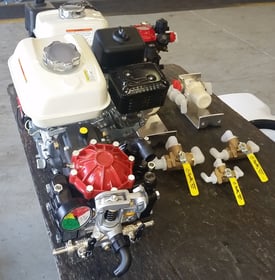 Our savvy Customer Service Technicians handle many calls throughout the day, many of which are inquiries from customers regarding how to properly maintain their sprayers in top-notch condition. For this reason, we have put together the most Frequently Asked Questions (FAQs) to help you take care of your equipment:
Our savvy Customer Service Technicians handle many calls throughout the day, many of which are inquiries from customers regarding how to properly maintain their sprayers in top-notch condition. For this reason, we have put together the most Frequently Asked Questions (FAQs) to help you take care of your equipment:
Q: When should I replace my spray tips?
A: If you notice a change in flow rate or a change in pattern distribution then this might indicate that your spray tips need to be replaced. You should replace your spray tips immediately if they are worn out or damaged.
Q: How often should I flush my pump?
A: After every use, especially if you are using herbicide or other harsh chemicals. Flush the pump using clean water.
Q: How do I know when my strainer needs to be cleaned?
A: If you notice a loss of pressure or a drop in flow rate then you may have a clogged strainer that needs to be cleaned. However, you should never wait until that happens, so it is advisable to clean it once a week depending on how often you spray. Check out our 3 Reasons Why You Should Check Your Sprayer.
Q: How often should I perform an oil change?
A: Please follow your specific pump's manufacturer recommendations.
Q: When should I calibrate my sprayer?
A: You should calibrate your sprayer at least once every season. For more information on calibrating your sprayer please check our Step-By-Step Sprayer Calibration Guide to get you started.
Q: I am using a diaphragm pump, when should I replace the diaphragm?
A: Every 500 hours or every 3 months, whichever comes first.
Q: Should I also check my pump's valve?
A: Definitely! If you are replacing the diaphragm it is the perfect opportunity to also check the valve and replace it if necessary.
There are also a few other things you should make a habit of checking as part of your sprayer maintenance:
Check
- Hoses for any cuts, damage or bends
- Nozzles to make sure they are clean
- Tank for any damage or rupture
- Pressure switch for any leakage
- Boom spacing

.png?width=280&name=SameDayShippingGuarantee-New%20(1).png)



